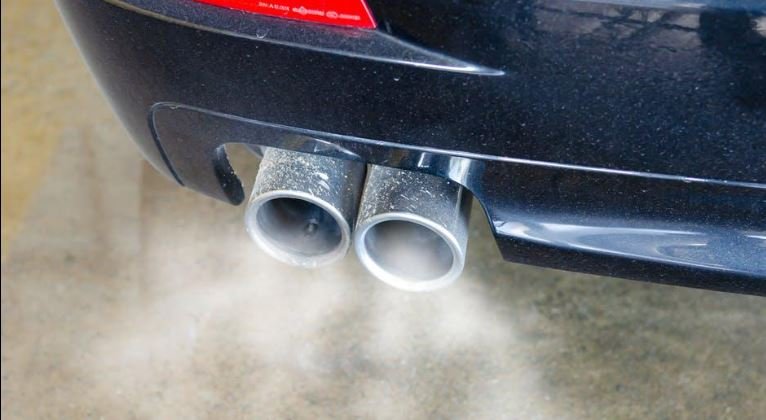Upgrading your vehicle’s exhaust system can significantly enhance its performance and sound. A performance exhaust upgrade not only improves horsepower and torque but also gives your vehicle a more aggressive and pleasing exhaust note. This guide delves into the benefits, types, and considerations when opting for performance exhaust upgrades.

1. Understanding Performance Exhaust Systems
A performance exhaust system optimizes the flow of exhaust gases from the engine, reducing back pressure and allowing the engine to breathe more freely. This increased efficiency results in better engine performance, improved fuel economy, and a more robust exhaust sound.
2. Benefits of Performance Exhaust Upgrades
Performance exhaust upgrades offer several advantages:
- Increased Horsepower: By reducing back pressure, performance exhaust systems allow the engine to produce more power.
- Enhanced Torque: Improved exhaust flow can lead to better torque, particularly at low to mid-range RPMs.
- Better Fuel Efficiency: Efficient exhaust systems can improve fuel combustion, leading to better mileage.
- Improved Sound: Performance exhaust systems provide a more aggressive and appealing exhaust note.
3. Types of Performance Exhaust Systems
There are various types of performance exhaust systems to consider:
- Cat-Back Exhaust Systems: These systems replace the exhaust components from the catalytic converter back to the muffler, offering improved performance and sound.
- Axle-Back Exhaust Systems: These systems replace the exhaust components from the rear axle to the muffler, primarily affecting the sound and appearance.
- Header-Back Exhaust Systems: These comprehensive systems replace the entire exhaust system from the headers to the muffler, providing maximum performance gains.
- Turbo-Back Exhaust Systems: Designed for turbocharged vehicles, these systems replace all exhaust components from the turbocharger to the muffler.
4. Material Choices for Exhaust Systems
Performance exhaust systems are made from different materials, each with its benefits:
- Stainless Steel: Durable and resistant to rust and corrosion, stainless steel is a popular choice for performance exhaust systems.
- Aluminized Steel: Coated with aluminum-silicon alloy, aluminized steel offers a balance of cost and durability.
- Titanium: Lightweight and extremely strong, titanium is used in high-end performance exhaust systems for its superior performance.
5. Components of a Performance Exhaust System
A performance exhaust system comprises several key components:
- Headers: Replace the factory exhaust manifold to improve exhaust flow from the engine.
- Mid-Pipe: Connects the headers to the catalytic converter or muffler, often designed to reduce back pressure.
- Muffler: Controls the exhaust noise and can influence the exhaust tone.
- Exhaust Tips: The visible part of the exhaust system, exhaust tips can enhance the vehicle’s appearance.
6. Installation Considerations
When installing a performance exhaust system, consider the following:
- Compatibility: Ensure the exhaust system is compatible with your vehicle’s make and model.
- Professional Installation: For optimal performance and fitment, professional installation is recommended.
- Local Regulations: Check local noise and emission regulations to ensure compliance with upgraded exhaust systems.
7. Sound Tuning with Performance Exhausts
Performance exhaust systems can be tuned to produce different sound profiles:
- Aggressive Tone: Systems with minimal sound-damping materials produce a loud, aggressive tone.
- Moderate Tone: Systems with more sound-damping materials provide a balanced sound that is noticeable but not overly loud.
- Quiet Tone: Systems with extensive sound-damping materials offer a subtle exhaust note while still enhancing performance.
8. Maintenance of Performance Exhaust Systems
To maintain the performance and longevity of your exhaust system, follow these tips:
- Regular Inspections: Check for leaks, rust, and damage periodically.
- Cleaning: Clean the exhaust tips and components to prevent buildup and corrosion.
- Repairs: Address any issues promptly to avoid further damage and maintain optimal performance.
9. Choosing the Right Performance Exhaust
Selecting the right performance exhaust system involves:
- Identifying Your Goals: Determine whether you prioritize sound, performance, or both.
- Researching Brands: Look for reputable brands known for quality and performance.
- Considering Budget: Performance exhaust systems come in various price ranges; choose one that fits your budget without compromising quality.
10. Conclusion
Upgrading to a performance exhaust system can transform your vehicle’s driving experience by boosting power, enhancing sound, and improving fuel efficiency. By understanding the different types of exhaust systems, materials, and components, you can make an informed decision that meets your performance goals and preferences. Regular maintenance ensures your performance exhaust system remains in top condition, providing lasting benefits for your vehicle.




